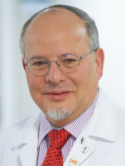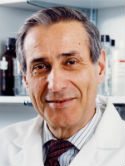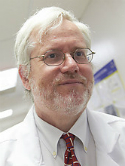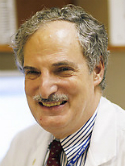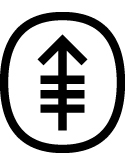Accelerated hyperfractionated total-lymphoid irradiation, high-dose chemotherapy, and autologous bone marrow transplantation for refractory and relapsing patients with Hodgkin's disease Journal Article
| Authors: | Yahalom, J.; Gulati, S. C.; Toia, M.; Maslak, P.; McCarron, E. G.; O'Brien, J. P.; Portlock, C. S.; Straus, D. J.; Phillips, J.; Fuks, Z. |
| Article Title: | Accelerated hyperfractionated total-lymphoid irradiation, high-dose chemotherapy, and autologous bone marrow transplantation for refractory and relapsing patients with Hodgkin's disease |
| Abstract: | Purpose: To evaluate the feasibility and therapeutic effect of accelerated hyperfractionated total-lymphoid irradiation (TLI), high-dose chemotherapy, and autologous bone marrow transplantation (AuBMT) in patients with relapsing or chemotherapy-resistant Hodgkin's disease (HD). Patients and Methods: Forty-seven patients with HD who either relapsed after chemotherapy (n = 19), or failed to respond (n = 28) to at least two regimens of combination chemotherapy were studied. No patient received prior radiation therapy (RT). Treatment started with reinduction with standard-dose chemotherapy, followed by involved-field irradiation (15 Gy) to areas of relapsed or persistent disease and TLI (20.04 Gy given in 1.67 Gy fractions three times per day for 4 days). Subsequently, patients received etoposide and high-dose cyclophosphamide, followed by infusion of unpurged autologous bone marrow. All surviving patients had a minimum follow-up duration of 1 year. The median follow-up duration for survivors was 40+ months, and the maximum follow-up duration was 80+ months. Results: Of the 47 patients treated, eight (17%) died of toxicity during the peritransplant period. Twenty-nine of the remaining 39 assessable patients (74%) attained a complete response (CR), while 10 remained with residual disease and progressed early after AuBMT. Four of the CR patients (14%) relapsed and 25 patients remained alive and free of disease. The actuarial disease-free survival (DFS) rate for the entire group at 6.5 years was 50%. Patients who received the protocol for relapsing HD had a significantly better DFS rate (79%) compared with patients treated for continuous refractory disease (DFS, 33%; P < .03). Conclusion: Previously unirradiated patients with relapsing or chemotherapy-resistant HD who have exhausted conventional chemotherapy may still respond to an aggressive therapeutic approach consisting of accelerated hyperfractionated TLI, high-dose chemotherapy, and AuBMT rescue. This program offers a potential for long-term DFS to approximately one half of patients who would otherwise have a dismal prognosis with standard-dose salvage therapy. |
| Keywords: | adolescent; adult; cancer survival; child; clinical article; school child; prednisone; cancer recurrence; cisplatin; doxorubicin; cancer combination chemotherapy; cancer radiotherapy; cytarabine; drug megadose; dacarbazine; etoposide; cyclophosphamide; dexamethasone; vincristine; chlormethine; lomustine; procarbazine; thiotepa; vinblastine; hodgkin disease; cancer resistance; survival time; radiation dose fractionation; bleomycin; bone marrow rescue; lymph node irradiation; intravenous drug administration; autologous bone marrow transplantation; human; male; female; priority journal; article |
| Journal Title: | Journal of Clinical Oncology |
| Volume: | 11 |
| Issue: | 6 |
| ISSN: | 0732-183X |
| Publisher: | American Society of Clinical Oncology |
| Date Published: | 1993-06-01 |
| Start Page: | 1062 |
| End Page: | 1070 |
| Language: | English |
| DOI: | 10.1200/jco.1993.11.6.1062 |
| PUBMED: | 8501492 |
| PROVIDER: | scopus |
| DOI/URL: | |
| Notes: | Source: Scopus |
Altmetric
Citation Impact
BMJ Impact Analytics
Related MSK Work



